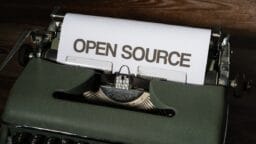CISA Issues Warning on CWP OS Command Injection Vulnerability
The Cybersecurity and Infrastructure Security Agency (CISA) has raised a significant red flag concerning a pernicious OS command injection vulnerability that impacts Control Web Panel (CWP), previously identified as CentOS Web Panel.
This vulnerability, cataloged as CVE-2025-48703, empowers unauthorized remote attackers to execute arbitrary commands on afflicted systems with relatively few prerequisites.
CVE-2025-48703 poses an alarming security threat, as it affords attackers the capability to circumvent authentication requirements entirely.
The weakness is embedded within the file manager’s changePerm request functionality, where nefarious shell metacharacters can be introduced into the t_total parameter, instigating remote code execution.
What escalates the severity of this vulnerability is that attackers need only to know a valid non-root username to exploit the system successfully.
This relatively low threshold for exploitation allows malicious actors to methodically target exposed CWP installations without the need for specialized access or credentials.
Overview of CWP OS Command Injection Vulnerability
The vulnerability is categorized under CWE-78, which pertains to the improper neutralization of special elements utilized in an operating system command.
This classification underscores a fundamental failure in input validation, enabling attackers to transcend established command contexts and execute arbitrary system commands under the aegis of the web application process.
CISA incorporated CVE-2025-48703 into its Known Exploited Vulnerabilities catalog on November 4, 2025, thereby indicating its active exploitation in the digital landscape.
The agency has established a mitigation deadline of November 25, 2025, thereby providing organizations a narrow window of approximately three weeks to fortify their systems against potential compromises.
CISA’s advisory underscores the dire necessity for immediate remedial action, particularly for organizations managing cloud services that are obligated to adhere to Binding Operational Directive 22-01 (BOD 22-01) compliance mandates.
Organizations sustaining vulnerable CWP installations have three primary avenues for remediation. Firstly, immediate application of vendor-issued security patches and mitigations is imperative.
Secondly, entities relying on cloud service providers should verify the implementation of BOD 22-01 guidance.
Lastly, in instances where patches prove unavailable or ineffective, discontinuation of the product may be warranted to eliminate exposure.
| CVE ID | Vulnerability | Affected Component |
|---|---|---|
| CVE-2025-48703 | OS Command Injection | Control Web Panel (CWP) – filemanager changePerm |
System administrators overseeing Control Web Panel deployments should prioritize addressing this vulnerability in their patch management protocols.

Immediate measures such as network segmentation, access control reassessments, and active monitoring for anomalous activity on CWP systems are vital interim strategies.
Additionally, administrators ought to scrutinize their logs for signs of compromise, particularly irregular filemanager changePerm requests that feature shell metacharacters or abnormal parameter values.
Organizations that lack a clear understanding of their CWP deployment status should expedite infrastructure audits to identify all active instances.
The confluence of unauthenticated access prerequisites and minimal exploitation barriers renders this vulnerability exceptionally perilous for exposed systems.
Source link: Cybersecuritynews.com.






